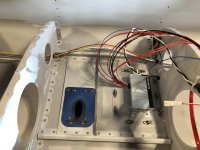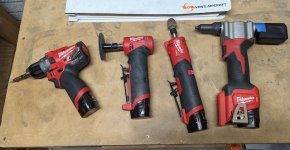Several "gotchas" have been found in the RV-12 plans over the years, some of which may remain unaddressed by Vans, for various reasons. One recent example was with the gun-drilled gear legs where the plans had you install the legs and then attempt to install a brake line fitting - which was impossible to do. I believe that one has been fixed. However, I would also recommend installing the brake line itself to that fitting before attaching the leg. You also have to install the fitting to the bottom of the leg before the wheel goes on.
Joe Gores (Mich48041) has posted a lot of tips and hints, but his build was 10 years ago.
https://vansairforce.net/community/search.php?searchid=61792794
Unfortunately, I am not aware of any up-to-date single source of hints and tips. Just have to do a lot of searching and reading. Google search with site:vansairforce.net at the end is very useful.
This is a personal preference, affected by individual circumstances, but I also built in a two-car garage and I'm glad I chose to build the wings last. They are massive and just get in the way. I had no problem building the wings in the garage while working around an otherwise mostly complete plane. However, if you can gut your garage of anything unrelated to your build, then you have more flexibility to plan ahead for wing storage, whether in a cradle against a wall, hung on the walls, or hung on the ceiling. I for one, did not want to give up that real estate during the entire rest of my build.
One of the biggest lessons I learned was it pays to be about 10x more obsessive and meticulous about organization than you think you need to be. Label everything! Make cheat sheets for torques and hardware codes to hang on the wall.
Also, it's advisable to add a signature to your posts that includes which plane you're building as many readers use "Today's Posts" or "New Posts" from the home page and may not notice which forum you're posting in. For the same reason, it can be helpful to add "RV-12iS" to the title of your posts when you really want to weed out non-12 responses.






